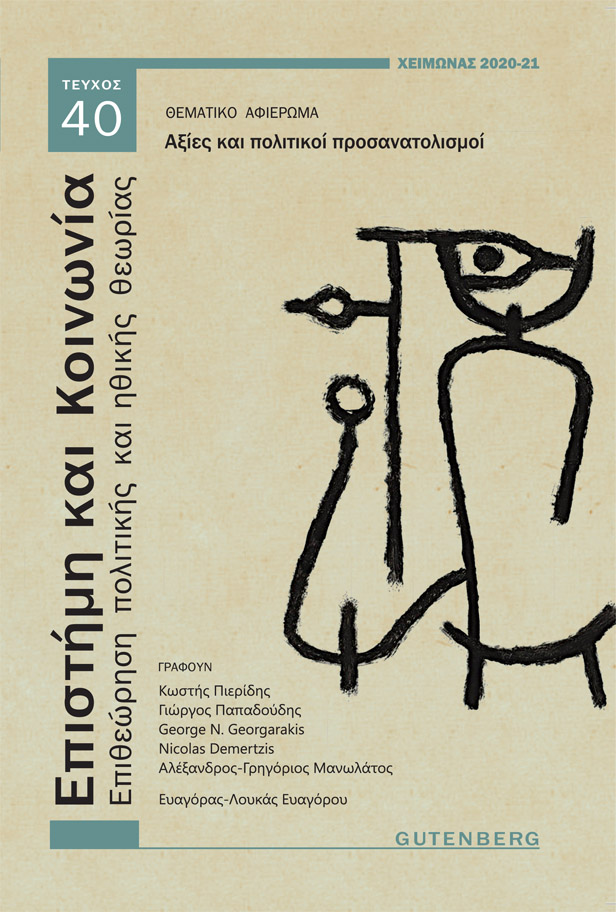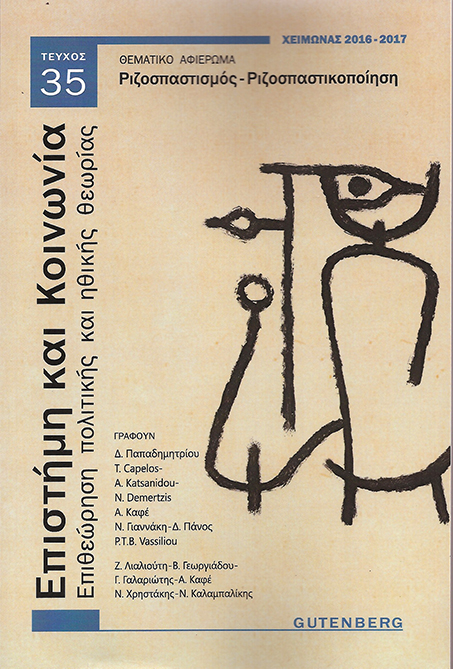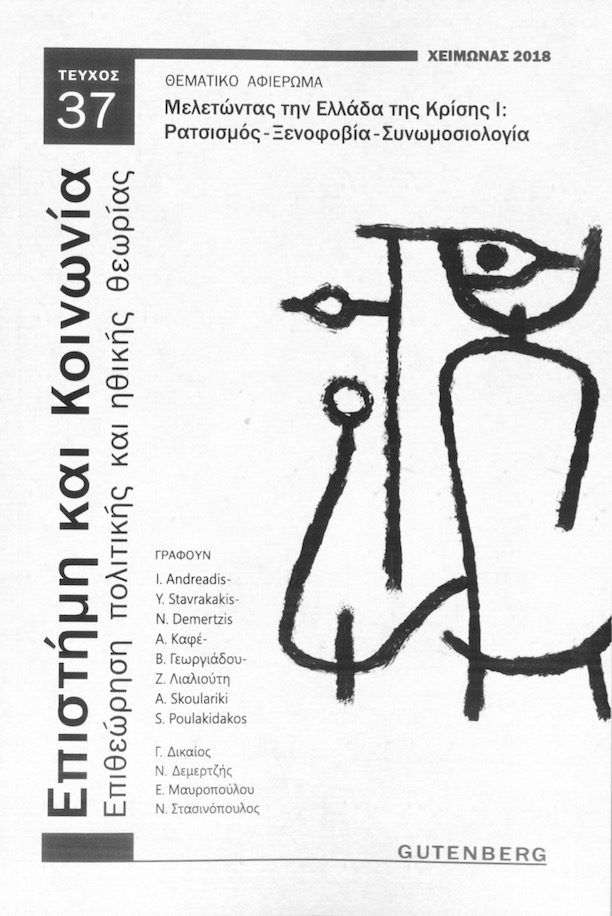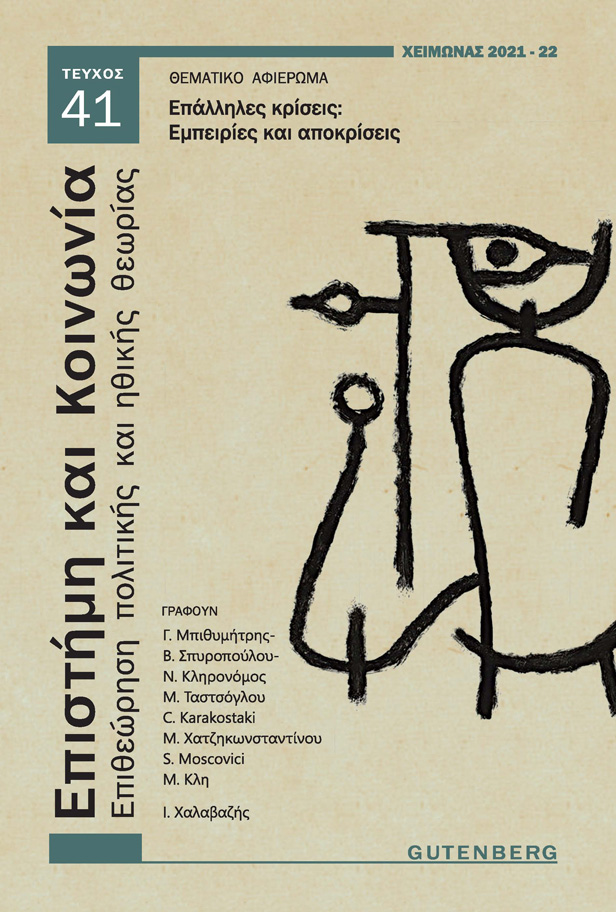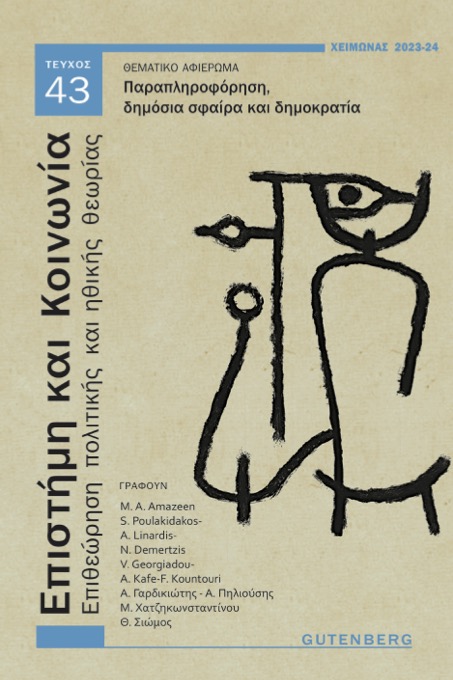What moves social movements? The role of emotions in collective action
Περίληψη
For many years, the study of emotions as a means of understanding social movements has been treated with suspicion, as emotions in politics were stereotypically associated with irrationalism and the worst moments and aspects of European and world history (i.e., Fascism, Nazism, populism). Even during the 1980s and most of the 1990s, when the study of social movements was at its peak, affective factors were rarely mentioned. This distrust has largely been dispelled over the last twenty years or so, as the sociology of emotions has rapidly developed. Movement analysis could not remain unaffected by this shift, and from the late 1990s on, a growing number of related works have reset the agenda in movement research. Specific emotions elicited within certain movements have been centre-staged: hope, frustration, disgust, contempt, hatred, devotion, fear, shame, rage, resentment, excitement, trust are but a few of the prevalent emotions that are now being used to explain the movement dynamics. In a way, this marks the return of the repressed to the analysis of social movements. Premised on the appraisal theory of emotions, this paper will discuss protest emotions as accelerators and amplifiers of social movements.
Λεπτομέρειες άρθρου
- Πώς να δημιουργήσετε Αναφορές
-
Demertzis, N. (2021). What moves social movements? The role of emotions in collective action. Επιστήμη και Κοινωνία: Επιθεώρηση Πολιτικής και Ηθικής Θεωρίας, 40, 114–145. https://doi.org/10.12681/sas.27173
- Ενότητα
- Άρθρα

Αυτή η εργασία είναι αδειοδοτημένη υπό το CC Αναφορά Δημιουργού – Μη Εμπορική Χρήση – Παρόμοια Διανομή 4.0.
Οι Συγγραφείς που δημοσιεύουν εργασίες τους σε αυτό το περιοδικό συμφωνούν στους παρακάτω όρους:- Οι Συγγραφείς διατηρούν τα Πνευματικά Δικαιώματα και χορηγούν στο περιοδικό το δικαίωμα της πρώτης δημοσίευσης ενώ ταυτόχρονα τα πνευματικά δικαιώματα της εργασίας προστατεύονται σύμφωνα με την άδεια Creative Commons Αναφορά Δημιουργού - Μη Εμπορική Χρήση - Παρόμοια Διανομή 4.0 Διεθνές , που επιτρέπει σε τρίτους - αποδέκτες της άδειας να χρησιμοποιούν την εργασία όχι για εμπορικούς σκοπούς, με την προϋπόθεση της διατήρησης των διατυπώσεων που προβλέπονται στην άδεια σχετικά με την αναφορά στον αρχικό δημιουργό και την αρχική δημοσίευση σε αυτό το περιοδικό και με διανομή τυχόν τροποποιήσεων υπό την ίδια άδεια όπως και το πρωτότυπο.
- Οι Συγγραφείς μπορούν να συνάπτουν ξεχωριστές, και πρόσθετες συμβάσεις και συμφωνίες για την μη αποκλειστική διανομή της εργασίας όπως δημοσιεύτηκε στο περιοδικό αυτό (π.χ. κατάθεση σε ένα ακαδημαϊκό καταθετήριο ή δημοσίευση σε ένα βιβλίο), με την προϋπόθεση της αναγνώρισης και την αναφοράς της πρώτης δημοσίευσης σε αυτό το περιοδικό.
- Το περιοδικό επιτρέπει και ενθαρρύνει τους Συγγραφείς να καταθέτουν τις εργασίες τους μέσω διαδικτύου (π.χ. σε ένα ακαδημαϊκό καταθετήριο ή στους προσωπικές τους ιστοσελίδες) πριν και μετά από τις διαδικασίες της δημοσίευσης, καθώς αυτό μπορεί να οδηγήσει σε παραγωγική ανταλλαγή ιδεών και σκέψεων καθώς επίσης και σε γρηγορότερη και μεγαλύτερη χρήση και ευρετηρίαση της δημοσιευμένης εργασίας (See The Effect of Open Access).

